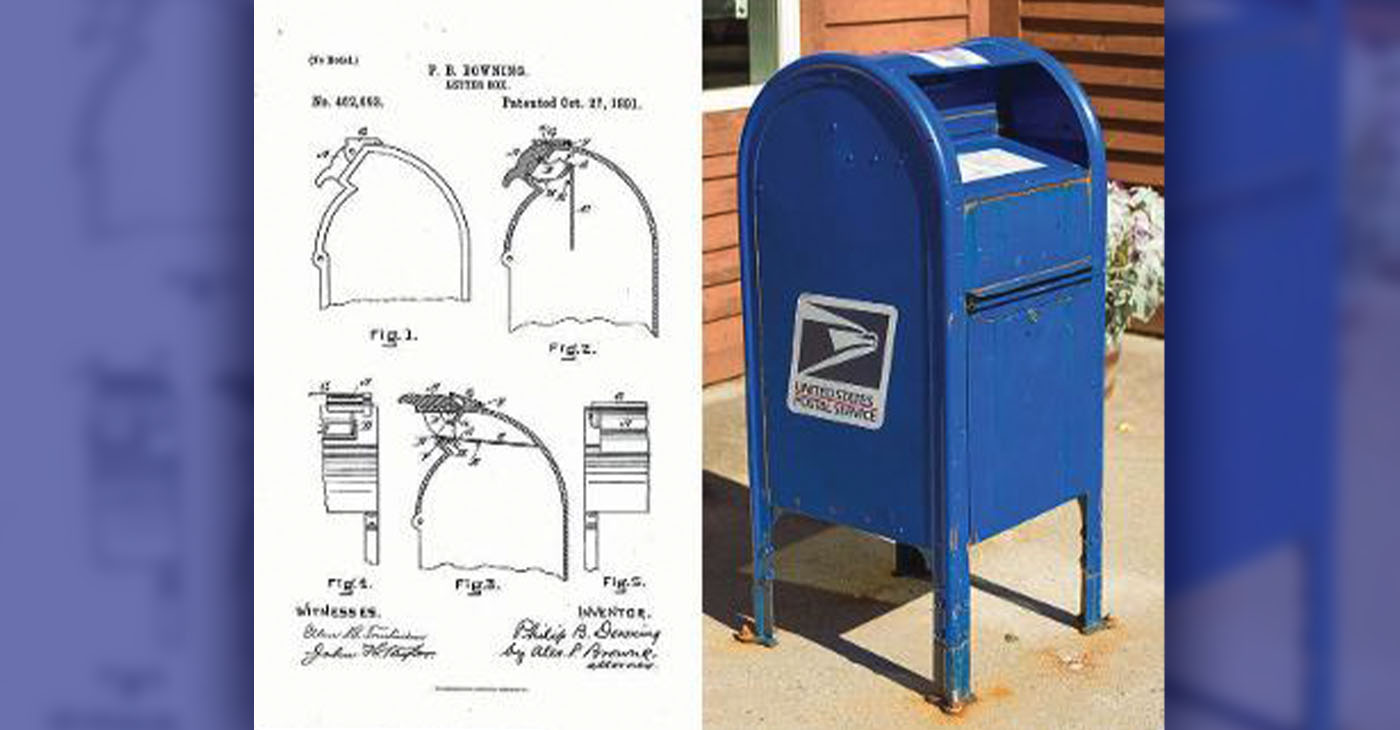By Tamara Shiloh
During the early 19th century, pieces of mail and packages could only be posted at the town’s post office. For many, this meant traveling long distances and delays due to inclement weather.
A more convenient solution was presented in October 1891, when Philip Downing’s (1857–1934) patent for the Street Letter Box made it possible for residents to leave their mail inside a tall metal box for the postman to pick up and take to their home post office.
The letter box was constructed of metal, had four legs and a self-closing hinge door that kept mail safe from the elements and potential thefts. That same year (1891), Downing received another patent for a design with a chute that would unload mail into a postal worker’s bag.
The Providence, R.I.–born Downing was creative from childhood, always looking for ways to improve on the routines of daily life. As the son of abolitionist George T. Downing, also manager of the US House of Representatives’ dining room in Wash., D.C., and entrepreneur Serena L. deGrasse, young Philip was exposed to influential leaders all of his life. In fact, in the mid-1830s, his grandfather Thomas Downing was a key player in the United Anti-Slavery Society of the City of New York. Later, Phillip would always be at his side, watching and learning.
Downing’s idea for the letter box came about because his family relocated often. In what seemed to have been every city, they too had to travel far to post mail. Like all great inventors, he saw a gap in progress, became creative and filled it.
Downing’s letter box (known today as a mailbox) has since gone through several improvements. During the early 20th century, the U.S. Postal Service approved the design of a locking curbside mailbox. Also introduced were specifications for installing curbside mailboxes that included placing the letter box 6-8 inches back from the curb.
Still, many features stemming from Downing’s invention have remained intact.
Although best known for the letter box, Downing received patents for other inventions. His first, the ‘New and Useful Improvements in Street Railway Switches’ (June 1890), was for an improvement in streetcar and train switches that allowed the switch to be opened or closed by the brakeman from the platform of the car. This patent ultimately led to the light switch. Later, in January 1917, he would, using a roller and an attached water tank, create and receive a patent for an envelope moistener.
During the late 19th and early 20th centuries, Downing successfully filed at least five patents with the U.S. Patent Office. None, however, were more widely used than the letter box. After a long career as a postal clerk, he died in Boston in 1934. He was 77. Perhaps one day his face will appear on a postage stamp.
Read with the young ones about items used in our everyday lives, including the mailbox, created by African American men and women in Charron Monaye’s “Imagine Life Without African-American Inventors.”
The post Philip Bell Downing: Black Creativity Seen in Everyday Objects first appeared on Post News Group. This article originally appeared in Post News Group.
The post Philip Bell Downing: Black Creativity Seen in Everyday Objects first appeared on BlackPressUSA.


















